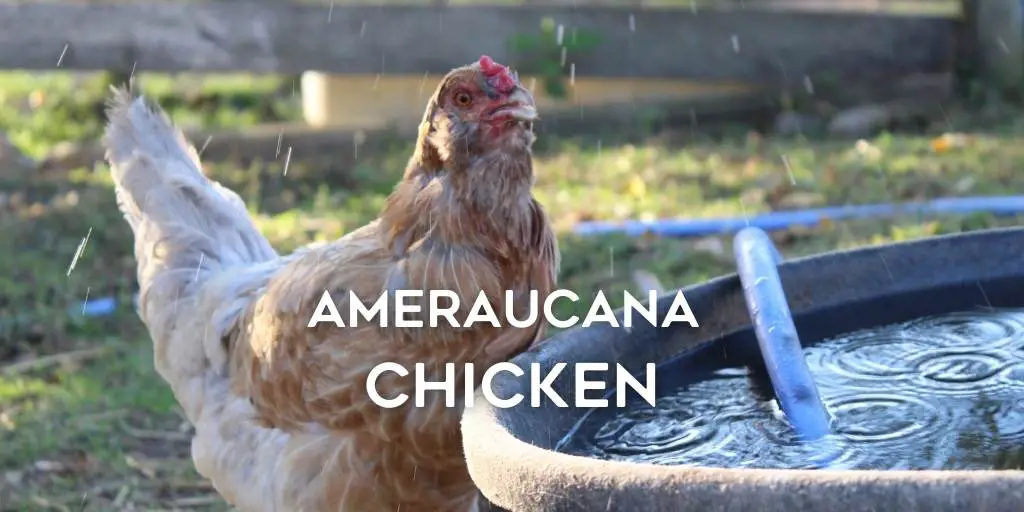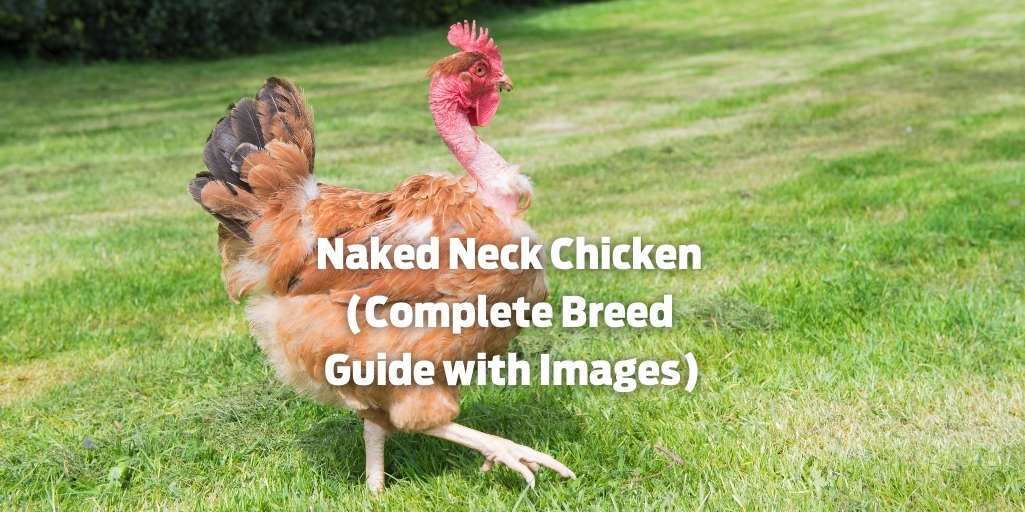Ameraucana is a rare, pretty breed of chicken that lays blue eggs. From the Araucana chicken, they share their speckled eggshells.
They also come in many colors and feather patterns (from plain to extravagant) and may be large or bantam. They make hardy hens with mild temperaments; roosters can be protective but not as aggressive as some breeds, such as the Brahma.
Though rarely broody, Ameraucanas can be good mothers. Read through to the end so that you can learn more about the Ameraucana chicken.
History of Ameraucana chicken
The Ameraucana chicken is a breed of domestic chicken originating in Chile, and developed in the United States by the Araucana Game fowl Breeders Association.
It was formerly known under ‘Easter Egger’, but that name has fallen out of favor due to its misleading connotations, since not all purebred Ameraucanas produce colored eggs. They’re also called Ameraucana or Araucanas.
Created for egg production, it is one of the few chicken breeds to lay blue eggs. The distinctive pea comb and laying abilities are popular among backyard poultry keepers as ornamental chickens and layers.
In contrast, their ability to fly makes them suitable only for keeping within an enclosure or high fence.
The Ameraucana chicken breed was officially recognized in 1987 by the American Poultry Association. It is a breed used to create other breeds, such as the Old English Game bantams.
The lifespan of Ameraucana chicken
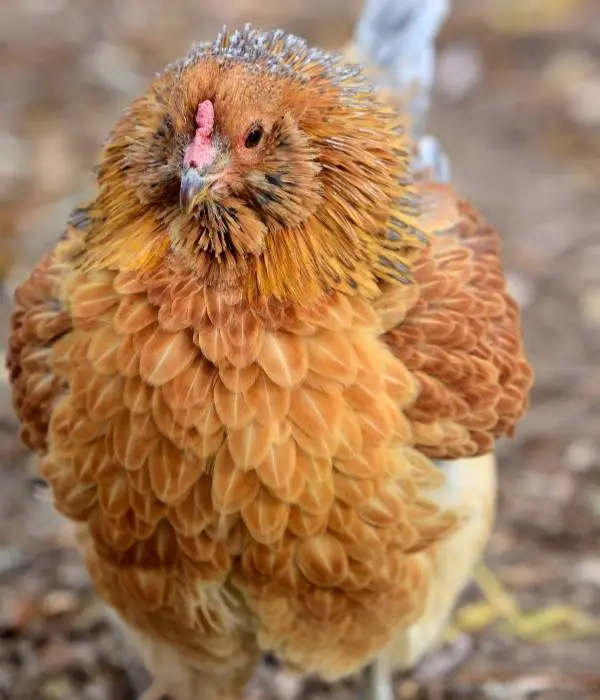
Ameraucana chickens are beautiful birds with many feather colors and patterns. They have a relatively long lifespan, with some individuals living up to ten years of age.
If properly cared for, they make excellent pets as well as excellent community flock birds. Ameraucana chicken color chart or table with the color of breed, no. of eggs laying, egg color, size, or weight.
Ameraucanas are unique! They’re the only breed that lays blue eggs. They have a pea comb and a beard, but no tail feathers.
Ameraucana chicken color chart or table with color of breed, no. of eggs laying, egg color, size or weight
They come in many colors: Black, Blue, Splash (patterned), Wheaten, White, and Red. The patterns can be any of these color combinations:
| Color Combinations | Laying ability | Breed Appearance | Characteristics of Breed | Weight and Size | Breed Purpose |
| Black/Red/Splash/Wheaten=Single Comb Clean Legged (Silver) Black/Blue/White = Rose Comb Clean Legged (Gold) Buff or Partridge = Single Comb Clean Legged (Silver) | Ameraucanas will lay about 200+- medium size eggs per year for a long time. As you can see, these are lovely layers. | Comb type is Pea. This chicken has a pea comb, which is an egg layer’s best friend in wintertime. The beard and the tuft of feathers on the head are other excellent features for this warm weather bird. | Docile, Hardy, Heat Tolerant, Lays Blue/Green Eggs, No Tail. | Size: 13-14 inches tall. Weight up to 7 pounds for a rooster and 5 pounds for a hen. | Egg and Ornamental |
Recognized varieties
The American Poultry Association has recognized twenty-three varieties of the Ameraucana. Below are the main ones:
Duckwing Wheaten: The feathers have a fine stripe down their center. This variety is very similar to the Buff variety with its bright yellow coloring and orangish beak.
The color is a darker shade of yellow. The coloring on the Duckwing Wheaten variety will grow lighter as it gets older.
Black: The black Ameraucana chicken has a solid black body and an orange beak; however, the American Poultry Association does not recognize this as an accepted color for show birds.
It is recognized as an acceptable egg color, and the association only recognizes six egg colors: white, light cream, tinted cream, brown, green, and blue.
Blue: This features a bluish-gray color, with some being lighter than others. They have slate-colored legs with a pinkish to grayish beak that darkens as they age.
In 2017, there was no clear winner in naming this variety’s name, but the white entries are currently leading in blue.
Blue Wheaten: The feathers will feature a black edging that quickly spreads over the entire feather. They have slate-colored legs with an orange beak that darkens as they age.
In 2017, there was no clear winner in naming this variety’s name, but the white entries are currently leading in blue.
Brown Red Wheaten: This variety is most similar to the Buff, bright yellow color and orangish beak that darkens as it ages. However, this one does not feature any black coloring on its back.
It has red wheaten coloring on its head and neck area and brownish-red coloring on the rest of the body. In 2017, there was no clear winner in naming this variety’s name, but the white entries are currently leading in blue.
Columbian: This breed has a bluish-gray coloring, with some being lighter than others. It has slate-colored legs with an orange beak that darkens as they age. The female is typically more of a lighter shade of gray.
Lavender: This breed features a light lavender color overall. The legs and feet are slate-colored, while the beak is usually yellow or horn-colored.
Light Fawn: This variety has a tan to fawn coloring over most of its body, and features a darker head and neck area. Its legs and feet are dark slate, while its beak is black.
Black: This breed features a solid black color with a hint of green in certain lighting conditions. Its legs and feet are dark slate, as is its beak, which can look almost blue or brown depending on how it reflects light.
White: This variety has a pure white body with slate-colored legs and feet and a horn-colored beak.
Blue: The shade of this breed’s feathers ranges from medium to dark bluish-gray. The legs and feet have an almost pinkish tone; as the beak may appear purple or gray when viewed from different angles under proper lighting.
Mottled Gray: The coloring on this breed is a mixture of gray and black feathers, creating a mottled appearance. The legs and feet are slate, as is the beak, which may have some pink highlights under the right lighting conditions.
The American Poultry Association (APA) recognizes three varieties of Ameraucana chickens: Lavender, Blue, and Black. In addition to these three recognized varieties, Lavender Mottled hens were shown in rare instances at poultry exhibitions in Australia during 2010.
Eggs Production
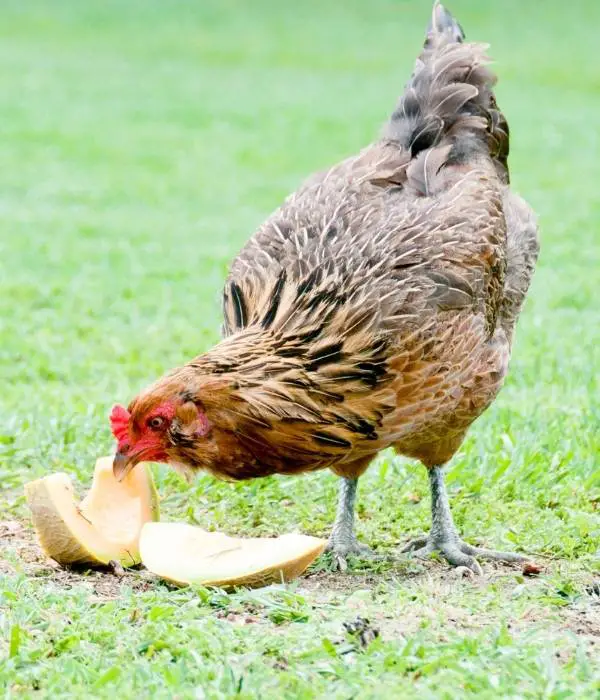
Ameraucana chicken facts state that this bird lays approximately 180 to 200 eggs per year. Ameraucana chicken facts indicate that these birds can lay brown or blue eggs.
It has been claimed that this breed is the only chicken laying eggs with blue shells. Ameraucana chickens can lay eggs all year round.
They produce off-white eggs and sometimes tinted eggs such as greenish or pinkish color.
Temperament and Personality
Ameraucana chickens have a calm, curious, but reserved temperament, which is typical of most birds. They are not aggressive unless they feel threatened or if their chicks are in danger.
Once relaxed around humans, these fowls can be very friendly and enjoy being petted and scratched behind the ears. Ameraucanas get along well with other breeds of chicken and can even live with guinea hens.
However, you should never keep more than one rooster in a flock because they may fight to the death over dominance, especially if there is a limited number of hens available to breed with.
Keeping multiple roosters together will result in many fights, often resulting in injuries or deaths for both the birds involved, and any innocent bystanders.
Ameraucanas can be shy around strangers, but will quickly become friendly when the people in their surroundings are relaxed and calm.
The personalities of these fowls vary depending upon whether they have been hand-raised or allowed to mature naturally in a free-ranging environment.
If raised properly, Ameraucana hens make excellent mothers and fiercely protect their eggs and chicks from danger. Since roosters usually get along well with each other, you should only house one rooster per flock.
That is to prevent any fights over dominance between them (though it’s important to note that even if housed separately, roosters still fight for dominance since there must always be a dominant rooster).
Males without hens may become ill-tempered and will need to be rehomed with a flock.
Color, Size, Appearance, Characteristics of Ameraucana chicken
Color
This breed has several colors to choose from:
- Wheaten
- Black
- Buff
- Blue Wheaten
- Brown Red
- White
- Blue
- Silver
Size (weight of both bantam and large size chicken)
The bantam Ameraucana hen weighs about 26 oz while the standard one 5 lbs, and the large size male about 6 lbs and bantam male 30 oz.
Appearance
Ameraucana come in a variety of colors, but the most common is blue. This breed also comes in other color variations such as black, white, gray, and splash (black and white spots).
The Ameraucanas’ appearance is that of a small chicken with a pea comb and clean legs. Their beaks are horn colored, and their earlobes are white.
In addition, they have a small patch of hairy feathers on their heads that resemble the Mohawk hairstyle. They are lovely, cute chicken breeds.
Characteristics
- Plumage is generally dark blue, with some white and gray areas on the head. Colors may fade in prolonged sunlight.
- The earlobes of an Ameraucana chicken are a red color that ranges from light pink to bright red depending on the area.
- An Ameraucana chicken is a medium-sized breed.
- In many areas, the Ameraucana chicken is known as an Easter Egger because it produces different shades of green and blue eggs popularly associated with Easter.
- Ameraucana chickens are non-setters.
- Ameraucana chickens were bred from a mix of Araucanas, Easter Eggers, and Plymouth Rocks.
Benefits of Raising Ameraucana chicken

Ameraucana chicken is a type of chicken that has a colorful body. It belongs in the American breed group. This breed’s uniqueness lies in the color of its eggs. Their eggs are blue or green.
The following are some benefits when raising these chicks:
Ameraucanas are known for being good setters, meaning they will stay in their nests longer, so you can have fewer egg-eaters in your flock.
The chicks are usually calm and docile compared to other chickens that may peck at them while they’re young or run away from humans when older.
Ameraucanas help control internal parasites with their scratching habits, which also makes them excellent free-range birds.
Ameraucana eggs usually come in blue or green colors, which can be used for dyeing Easter eggs. If you are also an Egger, Ameraucana chicken is perfect for your farm because they produce large brown eggs with a greenish tint to them.
Last but not least, Ameraucanas are friendly and quickly adapt well by allowing humans near their chicks or when being hand-fed by owners. At the same time, they’re young – although younger human hands may be targeted for pecking during feeding times!
Problems in Raising Ameraucana chicken
Ameraucanas are known for their beautiful blue eggs. Because of this, many people like to raise them for this trait alone.
But there is more to keeping these chickens than having an endless supply of pretty blue eggs (which don’t taste that different from other chicken eggs).
The Ameraucana chicken can be very hardy birds when they are given proper care and enough room to roam, but sometimes problems with disease or behavior can arise in captivity.
If you have Ameraucana chickens for years or are considering getting some, it’s essential to know the signs of common diseases in chickens, so you can prevent them if possible.
One disease which is especially prevalent among Ameraucanas is known as Lymphoid Leukosis. It starts with a condition called Marek’s disease, which is caused by the herpes virus.
This virus affects the nervous system of the bird, making them weaker and often causing paralysis.
The other main sign of lymphoid Leukosis is tumors which develop on the bird’s internal organs, especially near its digestive tract. If you notice any tumors or other abnormalities in your chicken, consult your local veterinarian for advice on treatment options.
A widespread problem among domesticated is chickens raised indoors is egg eating, also known as “pickiness.” Chickens who are used to eating seeds will typically begin throwing out their regular food source and only eat the yolks of their eggs.
If this happens, it is essential not to go into the coop and feed your birds for two days (or until they regurgitate any undigested food). This will frequently cause them to get back to eating their regular feed.
Once Ameraucana chickens reach around three weeks of age, you should switch them from their baby food to crushed oyster shells.
Chickens need calcium to produce strong eggshells, so if they don’t get enough, they may start laying too many soft-shelled eggs that are unfit for consumption.
Care tips for Ameraucana chicken
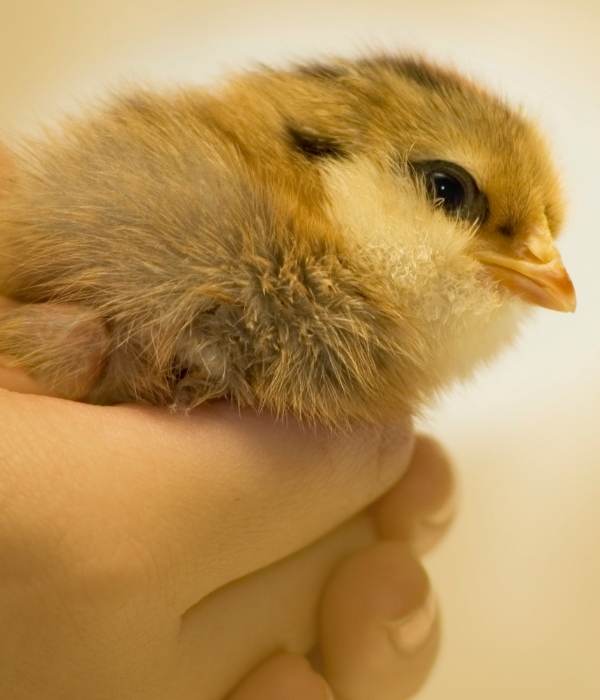
Below are general care tips for Ameraucana chicken:
A safe place to lay eggs
Ameraucanas are egg-laying chickens, and as such, they require a safe place to lay eggs. This means that the coop must have a nesting area out of the way of the rest of the flock and where they can feel undisturbed when going in to lay their eggs.
Ameraucana chickens are also tiny and should be kept away from other large chicken breeds that might peck at them or even hurt them.
Shade when it’s hot
This breed requires specific care because it is susceptible to heat when outside temperatures reach around 80 degrees Fahrenheit.
The Ameraucana chicken will need to be moved out of the sun to a safe, shaded area like under a tree or near an electric coop fan when temperatures get too high for this breed.
Require fresh water and food
As chickens, these birds require fresh water and food at all times, and their coop should always be kept clean by routinely removing any waste like droppings and scattering new shavings in.
They also require a feeder for their food and fresh water, which needs to be changed regularly not to become contaminated or dirty.
Both should be easily accessible from wherever the birds hang out, so they do not have to roam very far from their precious eggs or food if there is a problem.
They also require sunlight and access to the outdoors to eat grass if they choose, which some chickens do instead of eating their usual feed.
Summary
The Ameraucana is an American breed of chicken that is hardy, friendly, and very active. Bred for egg production, the hens are great mothers and quality layers of light green eggs.
Although Ameraucanas are relatively low in production, they are intelligent foragers and active brooders.
Not only are the hen’s great mothers, but also they are very docile and friendly enough to be handled by children. I hope you loved this informative breed guide on Ameraucana Chicken.
